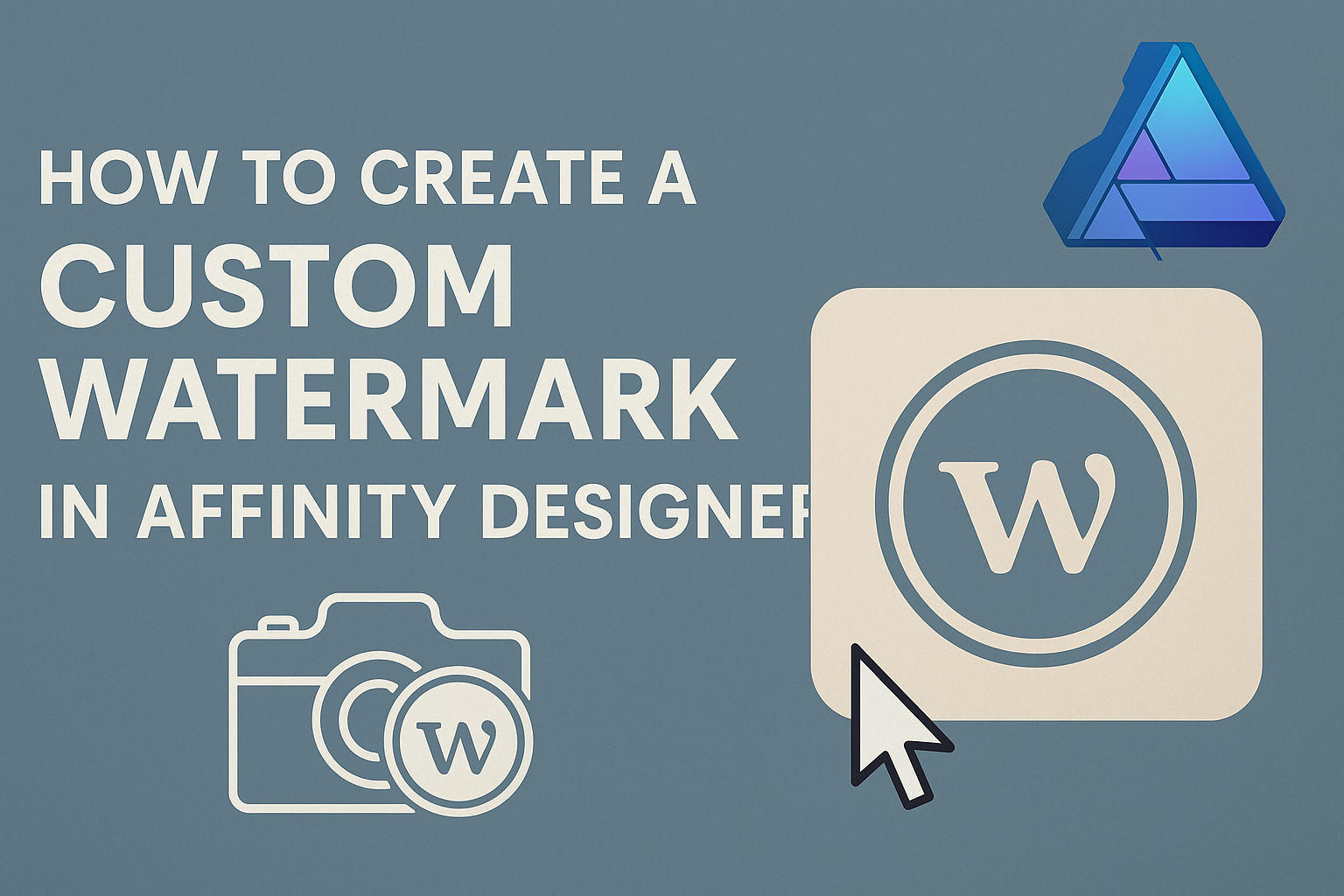Creating a custom watermark in Affinity Designer is a great way to protect and brand artwork. With simple steps, anyone can make a unique watermark that fits their style and needs.
Whether it’s for digital photos, designs, or graphics, a watermark adds a personal touch and ensures that credit is given where it’s due.
Many designers and artists struggle with how to make their watermarks stand out. The process may seem complicated, but Affinity Designer offers easy tools that simplify the creation.
This article will guide readers through the essentials of making a watermark that not only enhances their work but also showcases their identity.
By the end, they will feel empowered to create custom designs that reflect their vision. Adding a personalized watermark can help to keep their work recognizable while helping to prevent unauthorized use.
Let’s dive into the steps to get started on this artistic journey!
Getting To Know Affinity Designer
Affinity Designer is a powerful graphic design tool that allows users to create stunning visuals, including custom watermarks. Understanding its features and layout is essential for any designer looking to maximize their creativity and efficiency.
Understanding the Workspace
The workspace in Affinity Designer is user-friendly and customizable. It features a layout that includes a canvas for designing, which takes center stage.
On the left side, users find the Toolbar, where essential tools such as the Selection Tool and Brush Tool are located.
The Context Toolbar at the top changes based on the selected tool, providing quick access to relevant settings.
Designers can also arrange their workspace by dragging panels around or docking them. The Layers Panel on the right helps manage different elements in a project, allowing users to organize their work easily.
Essential Tools and Panels
Affinity Designer has a variety of tools that cater to different design needs. Key tools include the Pen Tool for creating shapes and paths, and the Shape Tools to easily draw rectangles, ellipses, and polygons.
The Color Panel is crucial for selecting colors and adjusting gradients. Users can also access the Assets Panel to reuse graphics and symbols, saving time on repetitive tasks.
The Export Persona is useful when finalizing designs for different formats.
With these tools and panels, designers have everything they need at their fingertips. Learning to navigate these features enables efficient design work and enhances creativity.
Creating Your Custom Watermark
Making a custom watermark involves designing a logo or text that represents one’s identity. Adjusting transparency and applying effects helps make the watermark blend seamlessly with images.
Designing the Logo or Text
To start, it’s crucial to create a clear design. Users should think about the brand or message they wish to convey. This could be as simple as their initials or a unique logo.
In Affinity Designer, select the Text Tool to write the desired text. Choose a font that aligns with the style. An elegant font may work for photography, while a bold one suits graphic design.
For logos, users can draw shapes or import images. Once the design is ready, adjusting colors to match the desired aesthetic is essential.
Applying Transparency and Effects
After designing, making the watermark less intrusive is important. Users should select the layer of their watermark and adjust the Opacity. A level between 30% to 50% usually works well.
Next, adding effects can improve the overall look. A slight Gaussian Blur softens the watermark, helping it blend into the background. Users can also consider using a subtle shadow to add dimension.
Testing the watermark on various images ensures it appears as intended. Adjustments can be made until the watermark achieves the right balance, maintaining visibility without overpowering the main image.
Saving and Applying the Watermark
Once a custom watermark is created, it’s important to know how to save it properly. Then, applying the watermark to various documents ensures that it appears correctly and consistently.
Exporting Your Watermark
To export a watermark in Affinity Designer, start by selecting the watermark design on the canvas. Go to File > Export.
In the Export dialog, choose the file type; PNG is a popular choice for its transparency support. Ensure that the settings are adjusted, particularly the Resolution for quality. After adjusting settings, click Export.
You will be prompted to name the file and select a location. This process creates a ready-to-use digital file of the watermark, which can enhance other documents efficiently.
Using the Watermark on Various Documents
To apply the saved watermark, open the document in which it will be used.
Import the watermark by going to File > Place and selecting the watermark file.
Position the watermark as desired. It can be resized or adjusted for transparency to blend well with the background.
For important or formal documents, the watermark may need to signify status, such as “Confidential” or “Draft.” This ensures that anyone viewing the document understands its purpose at a glance.

